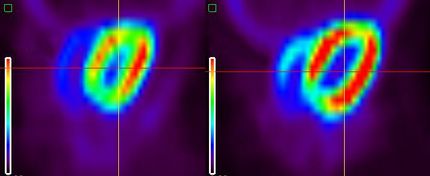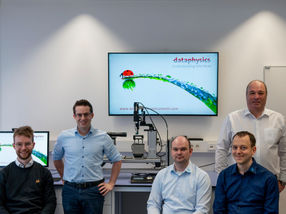FDA Advisory Committee issues split decision on recommendation to approve Diovan® (valsartan) for heart failure indication
15-Oct-2001
Basel / East Hanover, 12 October 2001 – Novartis' Pharmaceuticals affiliate in the US, Novartis Pharmaceuticals Corporation, announced yesterday that the Cardiovascular and Renal Drugs Advisory Committee to the US food and Drug Administration (FDA) has issued a four-to-four split decision about whether to recommend approval of Diovan® (valsartan) for the treatment of heart failure. Advisory Committees to the FDA provide independent opinions and recommendations to the Agency on applications to market new drugs or approved drugs for supplemental indications. Final decisions are made by the FDA.
The supplemental new drug application (sNDA) for Diovan for heart failure was filed with the FDA on 27 April 2001, and was granted priority review status. The Diovan filing is based on the positive results of the Valsartan Heart Failure Trial (Val-HeFT), the largest trial ever conducted in heart failure involving 5010 patients in 302 centers in 16 countries. Diovan is a leading angiotensin II receptor blocker (ARB) in the treatment of high blood pressure.
"We will continue to work with the FDA regarding our filing because we believe that Diovan has shown clear benefit in heart failure," said Paulo Costa, president and chief executive officer, Novartis Pharmaceuticals Corporation.
Val-HeFT demonstrated that Diovan leads to significant, incremental reductions in morbidity and hospitalizations for heart failure in patients who already take therapy prescribed by their physicians. Diovan has been approved for treatment of high blood pressure since 1996 and is the only ARB to demonstrate positive results in heart failure in a large-scale clinical trial.
In Val-HeFT, Diovan significantly reduced morbidity by 13.2% (p=0.009) and hospitalizations for heart failure by 27.5% (p<0.001) in patients who also took prescribed therapy vs. patients who took prescribed therapy with placebo, or sugar pill. Prescribed therapy could include ACE inhibitors, beta blockers, diuretics and digoxin as selected by the patients' physicians. The findings of Val-HeFT include significant improvements in ejection fraction (p=0.001), NYHA functional class (p<0.001), and clinical signs and symptoms of heart failure (dyspnea, fatigue, edema and rales) (p=0.01). Val-HeFT also demonstrated that heart failure patients taking Diovan with prescribed therapy experienced a significantly better quality of life in both the physical and emotional sense (p=0.005) vs. patients taking prescribed therapy and placebo, as measured by the Minnesota Living With Heart Failure questionnaire, a standard assessment tool. The rate of all-cause mortality was similarly low in the two groups.
Adverse events leading to withdrawal occurred in 9.9% of patients receiving Diovan and prescribed therapy vs. 7.3% of patients receiving placebo and prescribed therapy. The most commonly reported adverse events included dizziness and hypotension. The benefits demonstrated in Val-HeFT did not appear to extend to the subgroup of patients taking Diovan in combination with both an ACE inhibitor and a beta blocker.
Heart failure, or the progressive weakening of the heart muscle, is the fastest growing cardiovascular disease in the world. Nearly five million Americans have heart failure and 1500 new cases are diagnosed every day. Heart failure is also the leading cause of hospitalization in people age 65 and over. In the US, 2600 people are hospitalized every day because of this condition – a major reason why costs for treating heart failure are expected to exceed USD 50 billion next year. High blood pressure is a common risk factor for heart failure. About 75% of heart failure patients have a prior history of hypertension.
About three million patients worldwide take Diovan for high blood pressure. Diovan is one of the fastest growing among the top 10 branded prescription antihypertensives in the US today.
Most read news
Other news from the department science

Get the life science industry in your inbox
From now on, don't miss a thing: Our newsletter for biotechnology, pharma and life sciences brings you up to date every Tuesday and Thursday. The latest industry news, product highlights and innovations - compact and easy to understand in your inbox. Researched by us so you don't have to.
























































